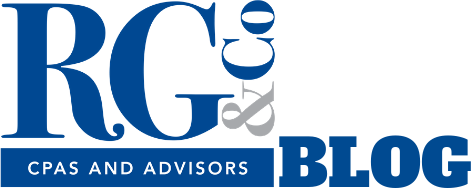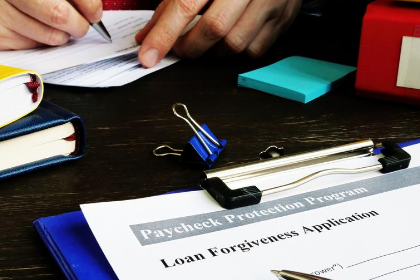As we roll into August 2020, that can only mean the kids will be back in school soon and football season is about to kick off. Well, this year, those two things are still uncertain. What is certain is that if your small business received a Payroll Protection Program (PPP) Loan under the CARES Act you are now trying to get the loan forgiveness process behind you and move on with running your business. We are here to help.
It’s been a few weeks since the latest guidance was released by the SBA. Here are a few reminders and tips to help you complete the forgiveness application. If you’re not up to date on the PPP process, check out our webinar, related slides, and other PPP and CARES Act guidance we have published here.
As of the writing of this article, banks are still not accepting forgiveness applications, but plan to start taking applications the week of August 10th. This will vary among banks. Loans were still being issued by banks and the Small Business Administration (SBA) through August 8th. Also in the works is the HEALS Act, which has not yet been passed but could expand the next round of PPP loans for those small businesses hit the hardest. We are watching these developments closely and will let you know if and how they may change what we are about to discuss.
1. PPP Loan Amount
Your next step depends on the size of your loan. If your loan is $150,000 or less, it is possible that you will receive automatic forgiveness from the SBA. There is chatter in Congress that loans of this size will be changed to grants and your application process will be nonexistent. That would be much appreciated news. On the other side of this issue are loans to businesses and businesses with affiliated entities of greater than a combined $2 million. If this applies to your business, make sure you check the $2 million disclosure box and that you have substantiated your need for the loan for compliance.
2. 3508 EZ Form
Determine if you are eligible to file the 3508 EZ Form. This three-page application will be a time saver for those who qualify. If you are: (a) self-employed with no employees; OR (b) a business that did not reduce wages by more than 25% AND had no full-time equivalency (FTE) reductions between January 1, 2020, and the end of the covered period; OR (c) a business that did not reduce wages by more than 25% AND you were not able to operate during your covered period due to direct or indirect government mandates, then the EZ Form could be for you.
3. Covered Period
By now you’ve probably decided what your covered period is. Are you using the eight-week period or the extended 24-week period? If you are using the eight-week period and have a bi-weekly or more frequent payroll cycle, are you using the alternative period? Make sure you are maximizing your payroll costs for full forgiveness. These rules are complicated so check our previous guidance linked above if you are still uncertain about covered periods and alternative covered periods, where we’ve explained it in detail.
4. Payroll Costs
When reviewing the payroll costs used in your calculation, make sure you have only included gross wages, health insurance, and retirement benefits paid for by the employer for non-owner employees. Do not include employer-paid Social Security and Medicare taxes. You can include state and local taxes. Include employees who make less than $100,000 on Table 1. Include those who make more than $100,000 on Table 2.
5. Owner Compensation
Owner compensation for all types of business entities is capped at $15,835 for the 8-week period and $20,833 for the 24-week period. When including owner payroll costs for C Corporation borrowers, include owner health insurance and retirement benefits as non-cash compensation and therefore not subject to the cap. When including owner payroll costs for S Corporation borrowers, you can still include owner health insurance, but it will be combined with cash compensation and subject to the cap.
S Corporation owner retirement benefits are not limited by the cap, just like C Corporations.
For self-employed taxpayers and partnerships, you cannot include health insurance or retirement benefits for owners. Also remember that owner compensation for purposes of loan forgiveness is capped at 2019 compensation amounts, so no 2020 raises are allowed to increase forgiveness.
6. Full-Time Equivalency Counts, Safe Harbors, & Exceptions
Full-time equivalency (FTE) counts can be confusing. Here are a few tips when looking at your FTE count during your covered period when compared to your reference period.
Your reference period will be either February 15, 2019 to June 30, 2019 or January 1, 2020 to February 29, 2020, whichever FTE count is less. If no drop in FTE’s, then you most likely qualify to file the EZ Form we discussed above. If you had a drop in FTE’s, one of the safe harbors may apply.
Safe harbors include the business being unable to operate due to government mandates and closings or if jobs lost between February 15, 2020 and April 26, 2020 are fully restored when the forgiveness application is submitted or by December 31, 2020.
If the safe harbors do not apply, see if an exception applies for the FTE reduction. Exceptions include employees fired for cause, employees who voluntarily resigned, an employee’s voluntary reduction in hours, or that you were unable to replace employees with qualified workers. You will want to make sure these are documented upon application submission.
7. Finalizing Your Application
As you finalize your application, make sure you have a good handle on your non-payroll costs Including rent, utilities, and mortgage interest. Utilities can include the basics like garbage collection, water, internet, and electricity. Rent and interest can include both real property and tangible personal property as long as the lease was in place prior to February 15, 2020.
If you are short on your loan forgiveness amount, go back and scan your general ledger during the dates of your covered period for missed non-payroll costs.
We hope this update and these tips help you with your PPP loan forgiveness application. If you still need help, feel free to reach out and we will be glad to help. We are a full service accounting firm of CPA’s and advisors with industry committees dedicated to construction, engineering, manufacturing, real estate, rent to own, healthcare, technology, trucking, professional service, and not for profit. Let us help you with your tax, valuation, and accounting needs.




